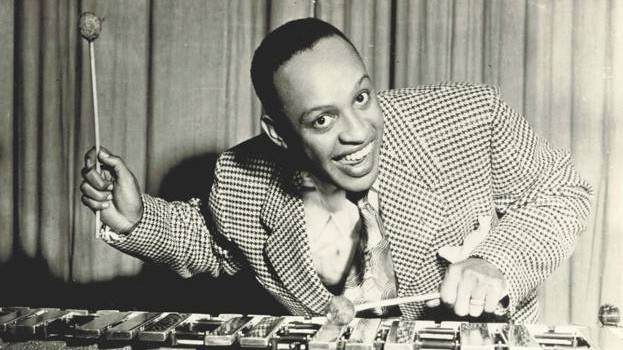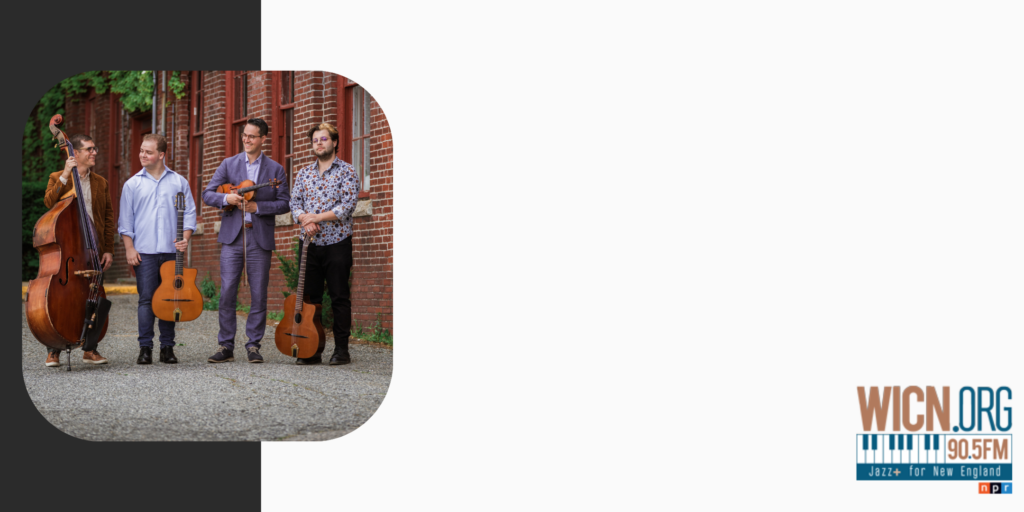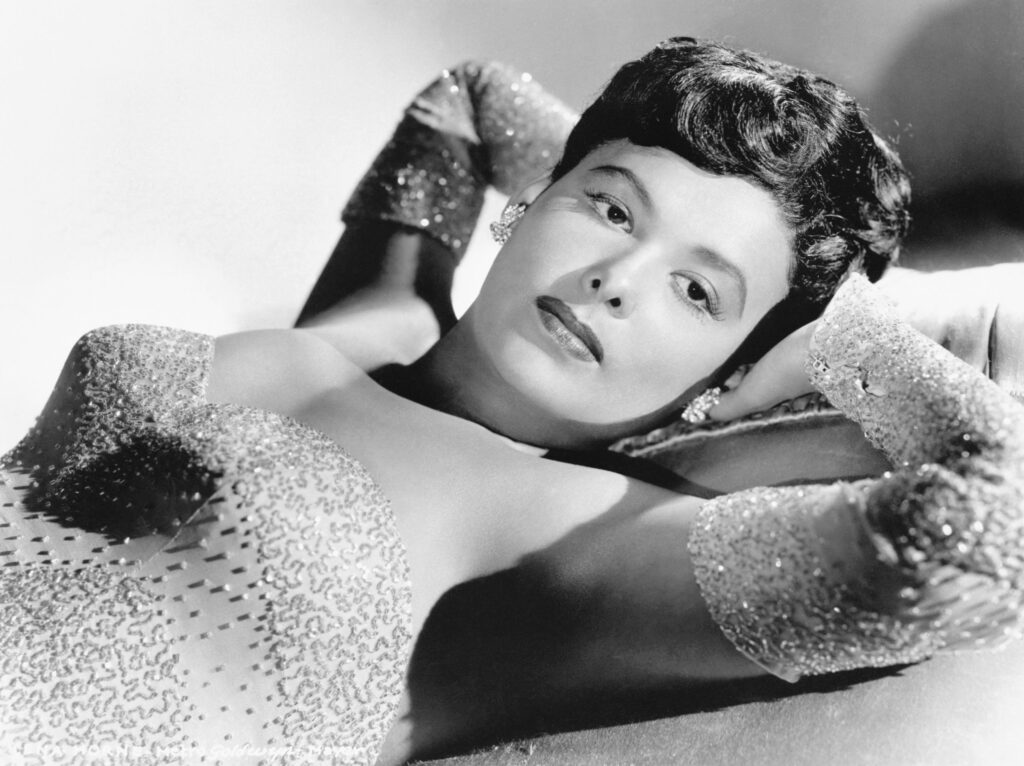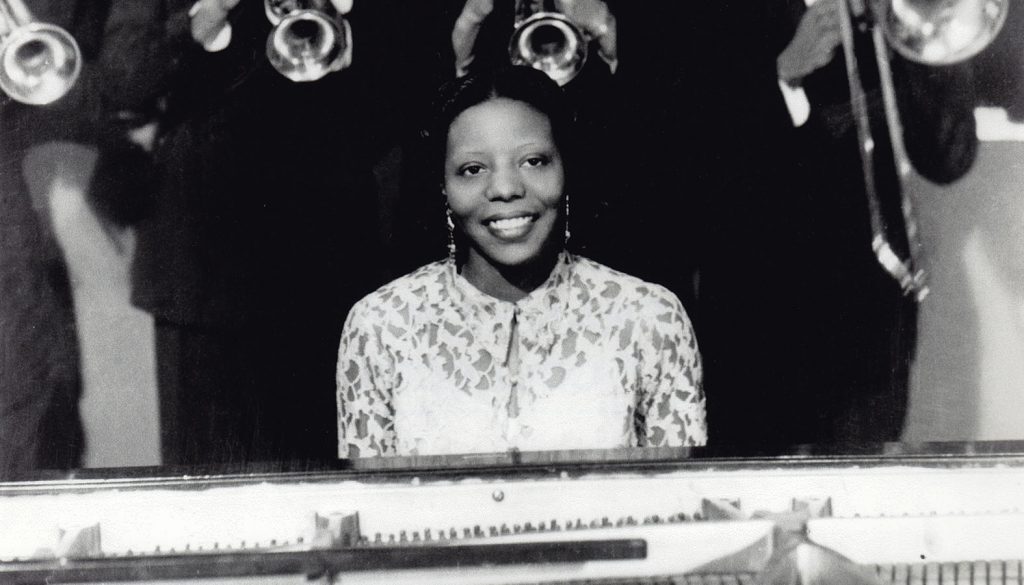Django Reinhardt: WICN Artist of the Month, December 2020
Written by Ben Young on December 1, 2020
Thankfully, guitarist Django Reinhardt has not fallen out of our 21st Century Jazz universe, though he’s been gone almost seventy years. That owes partly to the simple fact that his instrument remains ubiquitous in fields beyond Jazz: A musician with the chops that Django had will always be a marvel. Reinhardt also was a good “story”—a quirky talent who overcame adversity to become internationally famous. If those factors were the only basis for Django Reinhardt’s continuing fame, then we would have a signature model of guitar named after him, and maybe a few tribute bands that play the literature he made famous. We do have those things, but the more lasting tribute is the fact that at least some of the tribute ensembles work to replicate Reinhardt’s solos, note-for-note, as he played them. Such is the value of this fellow’s swinging solos!
Django Reinhardt was in 1934 what Eddie Van Halen was in 1978: The breakout figure with mad skills who raised the bar for a new way to shred on the instrument. As with Van Halen’s “Eruption,” folks since 1936 have been stashing themselves in their basement to teach their fingers how to play “Tiger Rag” according to Django Reinhardt’s version.
Here’s a quick read. Django Reinhardt was a pioneer as:
- The first European musician who was universally recognized as a singular Jazz virtuoso and a gifted improviser;
- A remarkable disabled person to have made an impact in the art form in his era;
- An artist who triumphed over discrimination suffered by being a member of the Roma ethnic minority;
- The focal point for a still-popular string-based, no drums ensemble design;
- Surely the most widely celebrated jazz musician to come from Belgium
Best of all, even disregarding all those statistical superlatives, Django’s flair makes an immediate impact—whether you’re a guitarist or even a musician; whether you know something about Jazz or not.
Reinhardt was born in 1910 in Belgium, into the nomadic population that we now call Roma. In his lifetime the Romani people were called by the now-outmoded verbiage “gypsy” in our language, or “Tzigane” in other parts of the world. Django and his family were people of dark features who had emigrated centuries before into European territory but never fully assimilated socially; rather, they lived in mobile communities of wagons. That lifestyle played a role in Django’s early biography. For starters, his cultural surrounding involved string instruments like the guitar and violin far more than the piano. Reinhardt was interested, took up the guitar, and was building up his chops when he was badly burned in a fire in 1928. In the wagon-train environment of natural fibers, lamp oils, and open air, the fire spread quickly; Reinhardt escaped with his life but not without injury. His left hand was damaged permanently and his right leg was nearly amputated; he was overcoming odds to regain use of that hand at all while learning to walk with a cane for the remainder of his life.
To Django Reinhardt’s credit, he willed himself through a rehabilitation process at the end of his teens, but he remained unable to use the last two fingers on his left hand. He was determined to play the guitar again and rebuilt his fingering, specialized to his physical needs. Within a year, he made his first appearances on record, as part of the backing ensemble in support of a number of singers in France at the close of the 1920s. Much of his informal musical activity through his early twenties we would hardly see as “work” at all—it included busking, performing on street corners for small change.
In 1932, he happened to be heard by a Jazz enthusiast who was important to what was becoming a very important arena of Jazz study and consumption. What Charles Delaunay heard was the nimble-fingered, swinging improvisations by a Django Reinhardt who was already thoroughly influenced by the example of even the small number of Louis Armstrong records that he had been able to find and study. That special sound was worth pursuing; Delaunay stayed on the case and began to advocate for the young Django Reinhardt to be heard more formally in a jazz context.
This is where Django Reinhardt’s story merges into the tale of the rise of a very robust jazz listenership in Europe. 1932 saw the beginnings of several European ‘Hot Clubs’—listening societies of friends who were into what was then an underground music, mostly an export commodity from the US. This happened in the UK and Germany, and shortly in Holland, but the most progressive and significant of them was the Hot Club of France, led by Charles Delaunay and Hugues Panassie in Paris. The club was dedicated to propagating the music. Through the coming years, the leadership was responsible for publishing early monographs about Jazz history, the first “Hot Discography”—a catalog of information about who had made what Jazz records and when—the first Jazz periodicals, and then founding the world’s first all-Jazz record label. They also put on concerts of their own home-grown Jazz, mostly inspired by the playing of Django Reinhardt, who would be the star.
Reinhardt by this time had met and begun working with the Anglo-French violinist Stéphane Grappelli, whose skill and style matched excellently with the guitarist’s. They outfitted a band with very unusual instrumentation: Grappelli and Django were the front line and took the solos. Recognizing their sponsoring organization, the group was presented as the “Quintet of the Hot Club of France”—often shortened to “QHCF”. Some other nomenclature issues: Notice that, unlike the ensembles nowadays that are inspired by the music of Reinhardt and co., this band was not itself the “hot club.” The Hot Club was the body of listeners who dug the sounds and wanted to dig deeper. (There is in fact a modern neo-Hot Club movement of listeners who still gather to digest, share, and appreciate the good sounds—in fact the Worcester Hot Club is active right here.) The group was their Quintet.
Jazz insiders often associate the QHCF’s violin-plus-guitar combination and the lively music made by Joe Venuti and Eddie Lang in the later 1920s. Reinhardt and Grappelli themselves disclaimed that this particular connection was any more important than the musical linkage to Armstrong’s Hot Five, for instance. What the QHCF did that was unprecedented came with the rhythm section support that they chose: a bass, no drums, and rhythm guitar, and then still one more guitar—for a total of three guitarists in one group. Django Reinhardt himself was a bold rhythm player whose forceful strumming in the ensemble was sufficient replacement for the drums. But as Django pointed out, when he moved the rhythm accompaniment to play a solo chorus, the group backing his solo would need the additional guitar voice to thicken the blend.
Whatever the explanation, it worked. The Quintet had an alluring sound that caught on right away among the Hot Club members. Shortly the Hot Club sponsored the group in concert around Paris and the area. Acceptance was not immediate, as illustrated by the fitful start of the Qunitet’s recording career. Their first demo recordings we now look on as some of the breakthrough music of 1934, but at the time the demo was rejected by label officials who felt there was no audience for this sound. Jazz people, they reasoned, would be into the more boisterous sound of horns and drums, and if people were listening to a string ensemble, they would want the more flowing sound of light classical or folk music, right? Not right. The world shortly proved that this new all-strings sound was a great new vehicle. Dozens of derivative ensembles and tens of thousands of fans are still proving that point in 2020.
The QHCF records were some of the first Jazz records made in Europe to be released in the United States—remarkably quickly, only a few months after the recording dates. Django began to be noticed, respected, remembered by American jazzmen in Europe. They were accustomed to being stuck with second-rate, underperforming musical accompaniments when in Europe. Reinhardt was a breath of fresh air who not only could cut it but was a real creative contributor to the proceedings. Reinhardt joined Americans Coleman Hawkins and Benny Carter on the April 28, 1937 record date that launched Disques Swing, the first all-jazz record label in the world. The word was out.
As the 1930s unfolded, the QHCF toured on an ever-wider scope—across France, then neighboring nations, then all of mainland Europe, and eventually England. In fact, they were in England when Nazi forces were encroaching on Paris. Django felt the need to get home and rushed to catch the last train back to Paris. Stéphane Grappelli took his time and ended up sealed off in England for the duration of the war. The colleagues reunited only six years later, once the war was over. In the meantime, Reinhardt continued to perform and even record on a limited basis in occupied France, along with a clarinet in place of the violin.
After World War II, Reinhardt made his one and only trip to the United States for a series of concerts opposite the Duke Ellington Orchestra of 1946. Considering the possibilities, the outcome was seen as underwhelming—partly owing to misunderstandings and inattention to the significant ego of the genius guitarist. Reinhardt himself was consistently dazzling in performance and on records through changes of accompanists, and even occasional encounters with amplified guitars.
Reinhardt died of a sudden stroke in his early forties, sealing the legend that burns bright. Let’s keep listening together to his magic.



